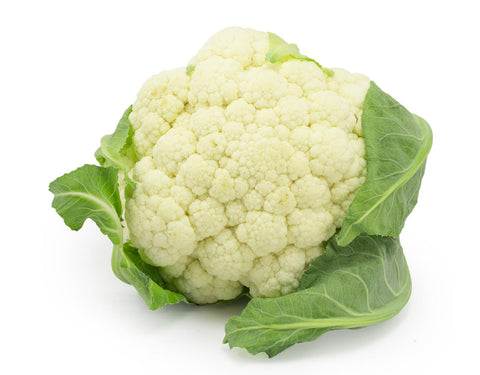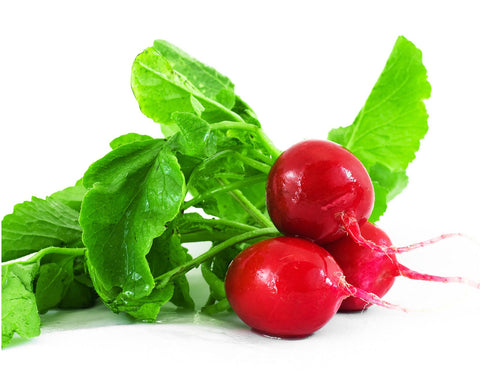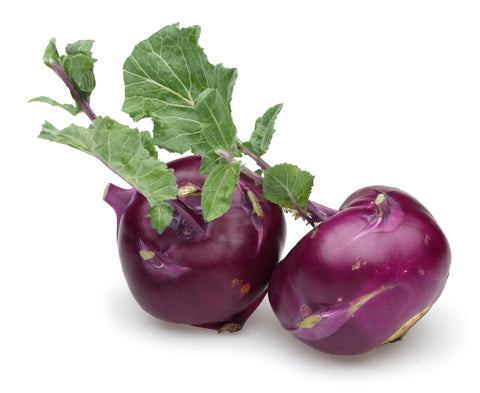Belonging to the genus of plants in the cabbage and mustard family, vegetables like broccoli, cabbage, turnip, kale, etc. are classified as Brassicas.
This impressively large and diverse genus known as Brassica has vegetables that are healthy and nutrient-rich. Being a cold-climate crop, Autumn winter is the best time to start sowing these vegetables for a hearty harvest. But you’ll need to decide which brassica seed you want to sow in your garden, depending on the space, interest, and more. In case you have no idea how to grow brassica, this guide will help you out. Listed below are 10 vegetables from the brassica family that you can grow in your backyard.
Let’s get started.
1. Broccoli

Resembling a miniature tree, broccoli is a man-made vegetable that was bred by Italian farmers. Only after the wild varieties of cauliflower were bred did this nutritious vegetable take birth. Yes, it was an accident; rather a beautiful accident as it helps reduce the risk of certain types of cancer, reduces inflammation, boosts immune health, and increases bone strength.
Tips To Grow Broccoli At Home:
Soil Conditions: Well-drained soil with a texture between sandy and clay loam and pH ranging between 6 and 7.
Spacing: Space your seeds 12-24 inches apart.
Depth: Plant broccoli seeds ½ inch deep.
Sunlight: 6 hours of sunlight every day.
Watering: Regular watering with 1 to 1.5 litres of water every week.
Harvest: 65-70 days from transplanting.
2. Cabbage

Packed with Vitamin C & K, cabbage helps improve digestion and keeps BP in check. The part of the plant that is usually eaten is the leafy head which is known to be a rich source of nutrients. From improving the gut to boosting the immune system, it does it all. Precisely why Indian mothers (and everybody) emphasise the importance of green leafy vegetables! And if you want, you can have brassica seeds of cabbage in your backyard. All you need is motivation to stay fit and some tips.
Tips To Grow Cabbage At Home:
Soil Conditions: Moist yet well-drained with a pH ranging between 5.5 and 6.5.
Spacing: Because the spread of the crop can be wide, sow cabbage seeds at a distance of 30-60 cm (1-2 ft).
Depth: Sow seeds 1.5 cm (0.6 in) deep.
Sunlight: 6-8 hours of direct sunlight every day.
Watering: Regular watering intervals.
Harvest: 3-4 months after planting when the cabbage gets hard and solid. If you want a red harvest, you can buy red cabbage seeds.
We have a complete guide on how to grow cabbage at home to make things easy for you.
3. Cauliflower

Looking to add healthy options to your kitchen garden? Don’t miss adding a cauliflower plant from the brassica family. Steam it or fry it; mash it or boil it; roast it or cook it - cauliflower is one vegetable that justifies the word ‘flexible’ in its entirety. Rich in Vitamin C, K, and other essential phytochemicals, it is one veggie that Indians love to consume.
Tips To Grow Cauliflower At Home:
Soil Conditions: Fertile, well-drained, moist soil with plenty of rich organic matter and a pH level of 6.5 to 6.8.
Spacing: Seeds should be sown 18-24 inches apart.
Depth: Sow cauliflower seeds half an inch deep into the soil.
Sunlight: 6 hours of sunlight a day.
Watering: Water the plant regularly, especially when it is in the germination phase.
Harvest: While white cauliflower seeds take 130 days to reach the harvest stage after sowing, green cauliflower seeds and purple cauliflower seeds take 180-190 days..
4. Kale

A part of the cauliflower family, you can either grow kale for salads (from kale microgreen seeds, red kale microgreen seeds, or kale baby leaf seeds) or grow kale as a vegetable (from curly kale seeds). Kale in the form of microgreens or baby leaves for sandwiches, pizza toppings, and likewise grows in 10 to 20 days. However, it takes around 90 days for this brassica seed to mature into a full-fledged vegetable. With umpteen health benefits, your kitchen garden deserves to have a plant that is the jack of all trades.
Tips To Grow Kale At Home:
Soil Conditions: Moist, well-drained soil with an ideal pH of 6.5 to 6.8.
Spacing: Sow Kale seeds 12-15 inches apart.
Sunlight: 5 hours of sunlight. It does fine with partial sunlight too.
Watering: Even supply of water.
Harvest: 60 to 90 days after sowing.
We have a handy guide for you on how to grow kale in India at home that will help answer all your questions.
5. Turnip

The creamy top-purple globe vegetable is packed with umpteen vitamins and nutrients. Apart from turnip purple seeds, turnip red seeds are also available to give your garden a distinctive look. Turnips relieve intestinal problems, lowers BP, reduces the risk of cancer, and aids in weight loss. With benefits like these, growing turnips at home seem to be a pretty good reason, right? We thought so!
Tips To Grow Turnip At Home:
Soil Conditions: Loamy soil with an ideal pH between 6.0 and 6.5.
Spacing: Sow turnip seeds at a distance of 4 inches.
Depth: Sow seeds not more than ½ inches deep in the soil.
Sunlight: Full sunlight of 6 hours per day.
Watering: 1 litre per week.
Harvest: 40 to 50 days after sowing.
6. Brussels Sprouts

Brussels Sprouts resemble mini cabbages. They are either cooked to make a side dish or main course. With their ability to fight cancer, making them a part of the kitchen garden is an excellent idea. What more can one desire than to have something that promotes healthy living at one’s beck and call! It also takes limited space in the garden, so a total win-win situation.
Tips To Grow Brussel Sprouts At Home:
Soil Conditions: Moist, fertile, well-draining soil with a slightly acidic pH between 6.0 and 6.5.
Depth: Sow Brussel sprouts seeds ½-1 inches deep into the soil.
Sunlight: 5-6 hours of sunlight every day.
Watering: Moderate watering, keeping the top layer of soil moist.
Harvest: 120-150 days after sowing.
7. Pak Choi

Great in soups and stir-frys, pak choi is remarkably juicy with hints of mustard. Besides aiding in the prevention of cancer, fighting inflammation, and lowering the heart rate risk, pak choi promotes bone and eye health. If you want to harvest it within 10 days to use it in salads or likewise, you can sow pak choi microgreen seeds. Else, to grow a full-fledged plant, you can grow a mature pak choi plant for all your homemade stir-fries with pak choi seeds.
Tips To Grow Pak Choi Plant At Home:
Soil Conditions: Well-drained crumbly soil with an ideal pH ranging between 6 and 7.5.
Spacing: Sow Pak Choi seeds at a distance of 3 to 4 inches.
Depth: Whether you’re growing brassicas in pots or containers, sow the seeds ½ inches deep.
Sunlight: The plant needs full sun but can survive in partial shade too.
Watering: Water enough and at regular intervals so the soil doesn’t get dry.
Harvest: 55-75 days for pak choi plants grown from pak choi seeds.
8. Kohlrabi

An amalgamation of turnip’s resemblance and cabbage’s flavour, Kohlrabi tantalizes the taste buds with its sweet taste. It is extremely beneficial to one's health as well. Apart from the usual variety, there is a purple variety that can be grown by sowing Kohl Rabi purple seeds. This purple variety has a beautiful name - Purple Vienna. Growing them will only add beauty to your garden and nutrition to your body. And who wouldn’t want that?
Tips To Grow Kohlrabi At Home:
Soil Conditions: Well-tilled soil enriched with compost that has a pH between 6.5 & 6.8.
Spacing & Depth: Plant KohlRabi seeds 12 inches apart at a depth of ¼ inches.
Sunlight: 6 hours of full sunlight.
Watering: The plant should be watered regularly.
Harvesting: 60 days after transplanting.
9. Radishes

White, pink, red, white-pink, white-red - Radishes can be found in a myriad of colours. And the best part is that it gets ready to harvest in just 4 weeks. Good, right? Well, to have it in one’s own kitchen garden is hands-down better. The best, actually! Because by welcoming radishes, you welcome good health and a strong mind. Radishes are high on fibre, control the BP, and guard the heart; making it a vital must-have in your backyard.
Tips To Grow Radishes At Home:
Soil Conditions: Well-drained, slightly acidic to neutral soil with pH of 6 to 7.
Spacing: Start by planting radish seeds 1 inch apart; then thinning them to 2 inches once they reach a small, edible size.
Sunlight: Full or partial sunlight.
Watering: Water enough to keep the plant evenly moist.
Harvesting: 30 to 55 days after sowing, depending on the variety being grown.
10. Mustard Greens

Mustard greens are peppery-tasting greens that are savoured best when boiled, stir-fried, or steamed. Low in calories and high in fibre, mustard greens can be grown from either Fenugreek (metha) seeds or Methi Kasuri seeds. Members of the brassica family, mustard greens are nutritionally leafy greens that are picked young to eat raw or at a later stage, to cook.
Tips To Grow Mustard Greens At Home:
Soil Conditions: Fertile, well-drained soil with a pH of 5.5 to 6.8.
Spacing: Space plants 12 to 18 inches apart.
Depth: Sow mustard seed ½ inch (12mm) deep.
Sunlight: Mustard greens grow in full sunlight or partial shade.
Watering: Steady supply of water.
Harvesting: 30-35 days after sowing.
With so many brassicas at your fingertips, what’s stopping you from having one (or all) of these in your kitchen garden? C’mon, take the reins of gardening in your hand and grow brassica seeds to experience the joy of health.


 Sign In
Sign In


























Let us know your feedback
* Comments must be approved before being displayed.